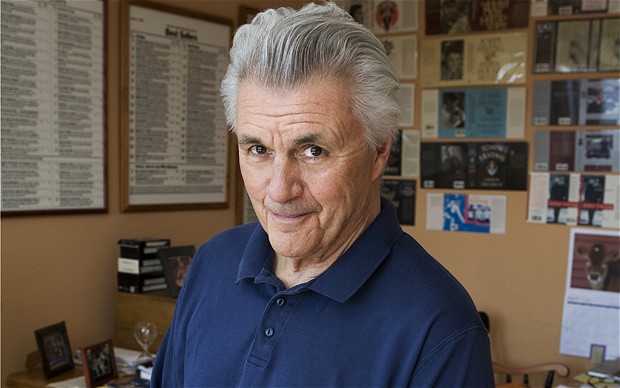Culture
The Story Of This Story: “In One Person”

John Irving’s In One Person chronicles the sexual journey of William, a young man essentially from Podunk Vermont. When William begins his story, he is already 68 years old, so he starts where he feels it most appropriate: the age of 15 in the late 1950s. It is at 15 where William meets Miss Frost, the librarian in his small Vermont town. She is a constant floating head throughout the book; we don’t encounter her all too much after the beginning, but she is central to William’s journey. He is very attracted to her broad shoulders and small breasts, features that will become common in the women he is attracted to throughout his life. But William isn’t only attracted to women, he is also attracted to men, and as he discovers later in life, men meant to be women.
He is raised by his mother, stepfather and maternal grandparents. He doesn’t know much about his father initially, just that he was young and left the family when William was young. His grandmother is a very stern, traditional kind of woman. His grandfather, on the other hand, likes to dress like women on stage and is one of the sweetest characters in literary history. How did this match come to be? I have no idea, but I would definitely read that prequel.
Now, when I say he dresses like a woman on stage, I should probably be clearer. Grandpa Harry was an actor at the local theater, but he specialized in female characters. Most people loved to watch and always saw it as “all in good fun.” Now, for as often as sexuality comes up throughout In One Person, it is never explicitly said what Grandpa Harry’s sexual preferences are; William says at one point that he wasn’t sure if Grandpa Harry was gay or bi or what, but since William doesn’t try to know, we don’t. Many characters’ sexualities will come into question, and you do get answers, even if you have to wait a while.
But this isn’t about other characters. This is a story about William trying to figure out who the hell he is in a time where being gay was frowned upon, let alone being pansexual! (William never explicitly uses this term, but it wasn’t something used at the time when he was coming up.) Therein lies another interesting aspect of In One Person: William’s perceptions on the evolving world of “gay culture.” He is uncomfortable telling his male gay friends that he is bi, because he feels judged, and the same goes for his straight female companions. He also is anti-monogamy but (when he’s older) he votes for equal rights, because “It’s what the gay youth of today want.”
A recurring character in the novel is William’s best friend Elaine, who stays close with William through out the novel. They experience a lot together, and not just normal best friend situations. The character that the two bond over is a young wrestler attending William’s all boys school, Kitteredge. Kitteredge becomes an entity to them who is suddenly thrust into their world by deciding to join the theater company in town, where he will become a cast member and bring fellow wrestlers into the arena.
After what can best be described as an “incident” in which theoretically Kitteredge should have been expelled, William and Elaine remain fascinated by him. Long after they graduate, he continues to pop up in their conversations, silent musings of where he may have gone and what may have happened to him. And don’t you worry, dear reader, you will find out.
Witnessing William navigating his way through his sexuality is engrossing, particularly when he has sex with a woman for the first time. I won’t say too much, but for all you first time dudes, don’t say what he says to her after. You may mean it as a compliment, but it will not come off that way. Not one bit. That being said, there is nothing graphic in the novel with respect to sex. There is one scene with a “payoff,” but it’s not what you would think.
One of the most enlightening sections of the novel is when AIDS begins to spread through William’s community. Characters from the past come back and William doesn’t know how to deal with the death that is suddenly surrounding him. That’s not to say he runs from it, or pretends it isn’t there, but more so that he is dutiful, and doesn’t get too involved. He visits the people he should, but logs no extra time volunteering to help others.
In One Person, much like Middlesex, is one of those novels that you know will, and should, be taught through out Queer Lit classes across the country. It gives insight into a time where we tend to forget certain lifestyles were so widely frowned upon. Not that William ever tries to deny who he is or who is attracted to, it’s his business.
One of the more touching moments in the book is toward the very end, when William is older and teaching at his alma mater. He meets Gee, and she is one of those characters that you wish were real; I know I would definitely want to be Gee’s friend. More importantly, she shows William just how far his community has come, and that they still have battles to win.